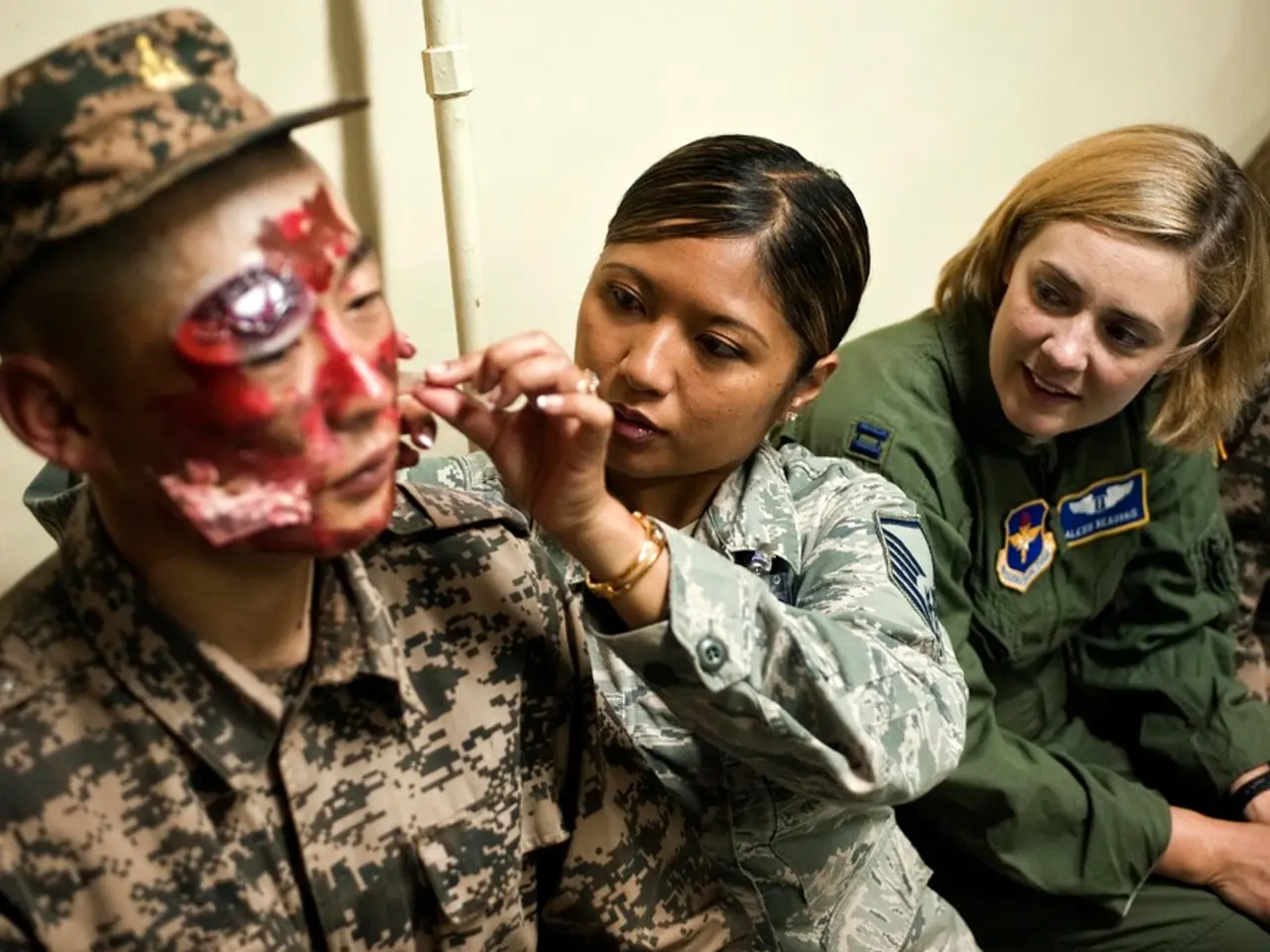Is It Better to Cover a Wound or Allow It to Breathe Freely?
In the realm of wound care, maintaining a balanced approach is key. While the notion that wounds need constant exposure to fresh air may seem intuitive, it is, in fact, a misconception. A well-informed understanding of wound care can help promote faster healing and reduce scarring.
Bandaging wounds is a common practice during the initial and active healing phases. This method helps maintain a moist environment that accelerates cell regeneration, reduces inflammation, and protects against bacteria and contaminants. Hydrocolloid or other modern bandages are recommended for fresh wounds as they enhance healing and reduce scarring [1][3].
Contrary to popular belief, wounds heal faster when covered properly, especially in the early stages. It is acceptable to leave a wound uncovered briefly, such as during showering or while at home in a clean environment, but wounds should otherwise remain bandaged until a new skin layer forms [3].
Airing out minor cuts can be beneficial in some cases, especially in clean environments, as oxygen exposure may reduce moisture that could encourage infection. However, daily monitoring for signs of infection is necessary if wounds are left exposed [4].
For minor burns and cuts, after initial cooling, applying a gentle gel and then covering with a sterile, breathable bandage is recommended to prevent infection and mechanical irritation while allowing some air circulation [5].
In summary, fresh/open wounds (during early healing) should be kept moist and covered with sterile bandages or hydrocolloid dressings [1][3][5], minor cuts in clean environments may be aired briefly with daily monitoring for infection [4], and wounds that have formed a protective skin layer can be exposed to air more freely to complete healing [3].
However, there are exceptions to the rule of covering a wound. Small dry scabs from minor cuts and scrapes can be left uncovered, and pressure ulcers on the heels can often be left open to dry.
If a wound looks deep, is not healing, or might be infected, it is advisable to consult a healthcare professional. Healthcare professionals usually follow a specific process for wound care, and their guidance is invaluable in ensuring proper healing and minimising scarring.
In an interview, Dr. Christi Cavaliere, a plastic surgeon, emphasised the importance of maintaining a moist wound surface without it being overly wet. She also highlighted the role of topical antibiotic ointment in treating scrapes and small cuts. Gauze or a bandage is typically used to cover a wound after treatment, and covering a wound protects it from dirt, germs, and further injury.
In conclusion, bandaging is crucial initially for protection and moisture, while controlled airing is appropriate later or for minor superficial wounds if conditions are clean. A well-informed approach to wound care can significantly speed up the healing process and reduce scarring.
- Incorporating health-and-wellness knowledge, like the correct bandaging techniques, can lead to faster healing and reduced scarring for wounds.
- For comprehensive wound care, therapies-and-treatments such as topical antibiotic ointment and Gauze or bandage coverings are recommended to prevent infection and promote healing.
- Nutrition plays a supporting role in overall healing, as a well-balanced diet can boost the body's ability to recover and recover more quickly.




